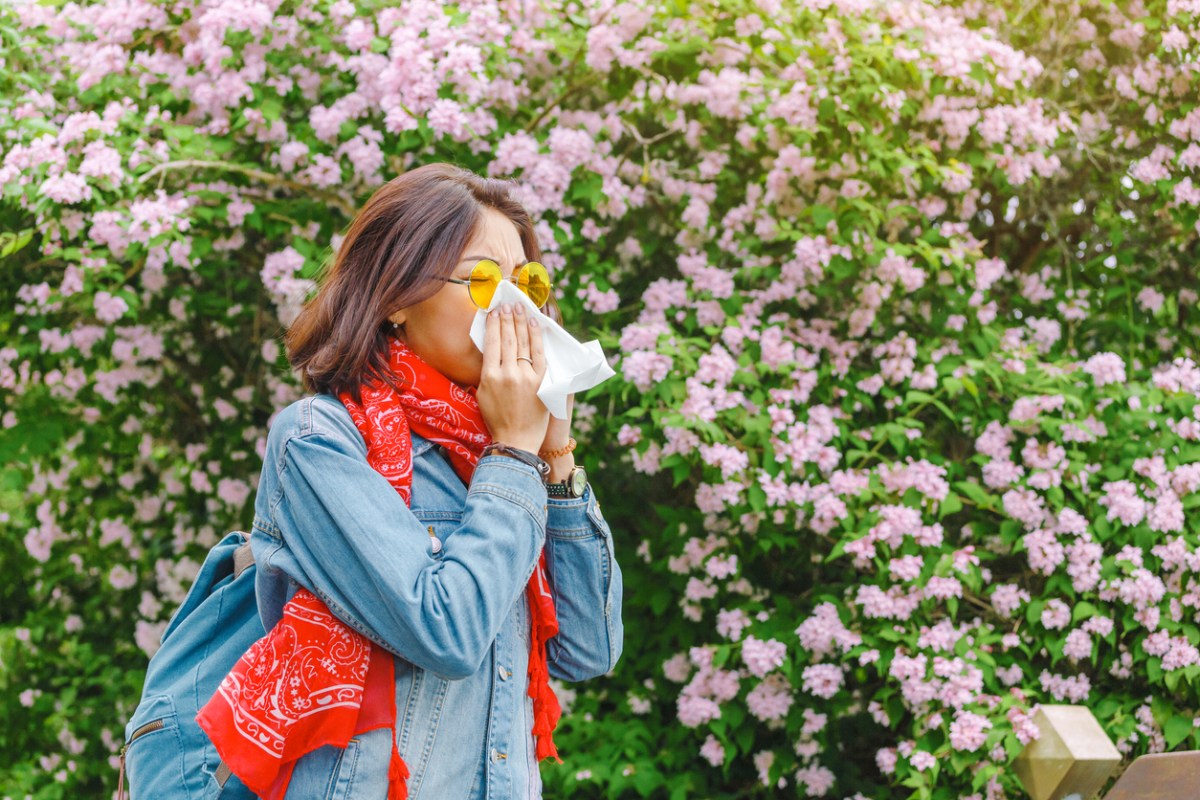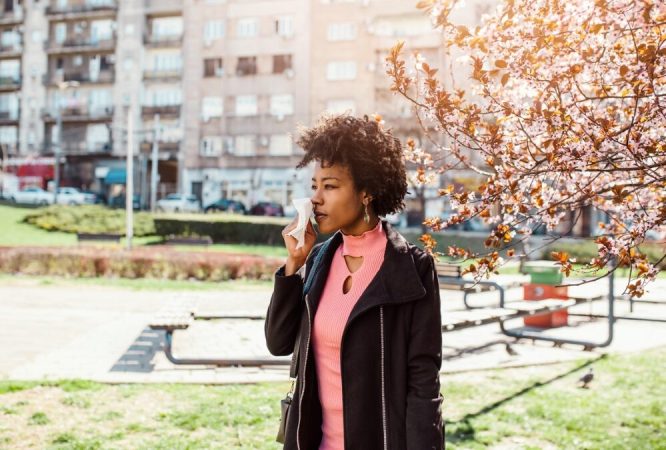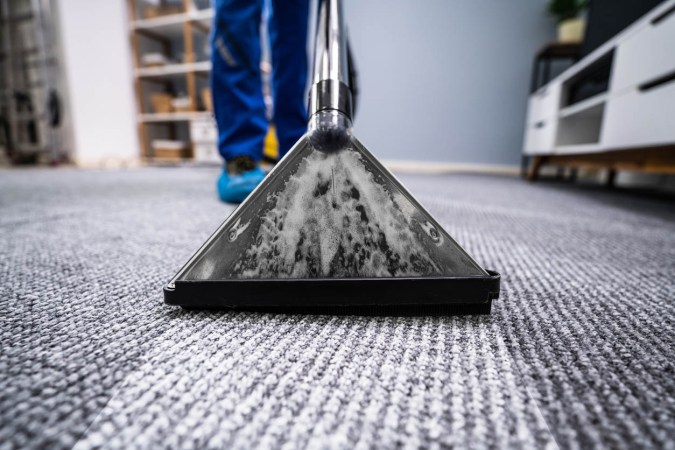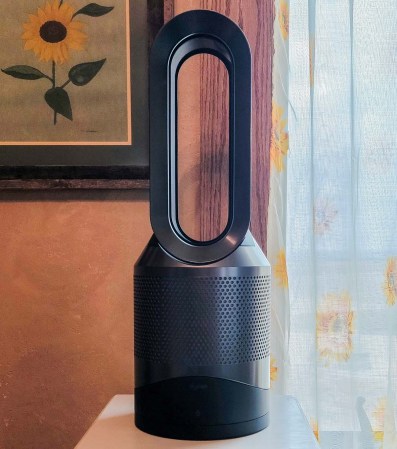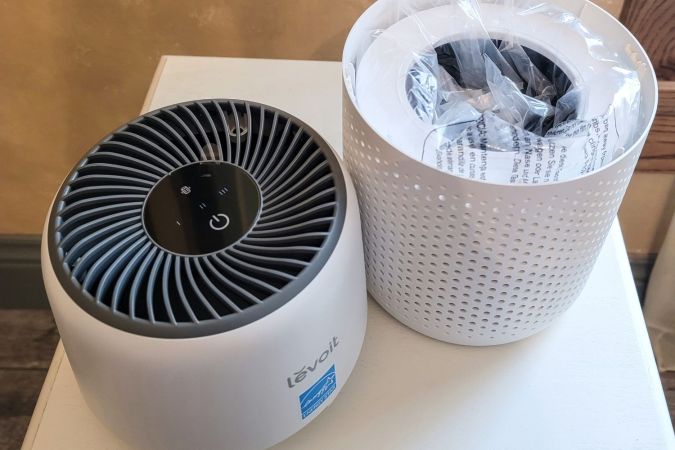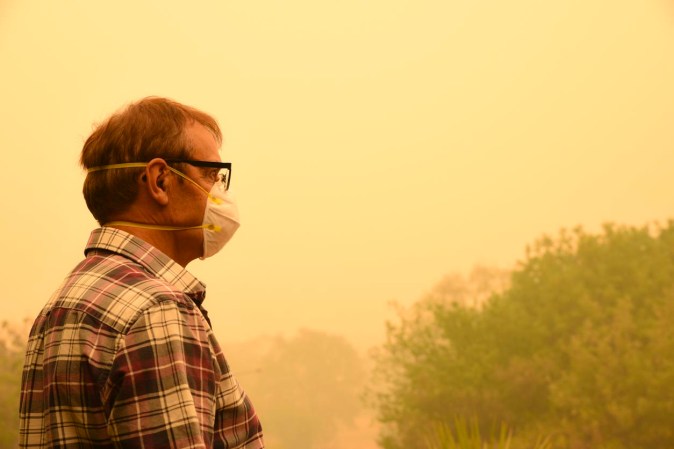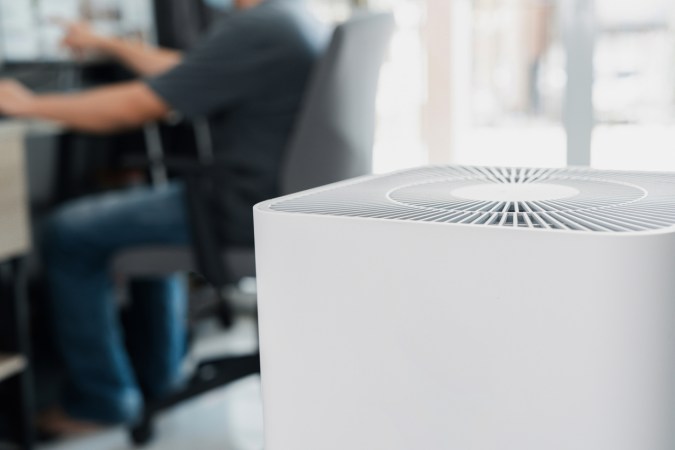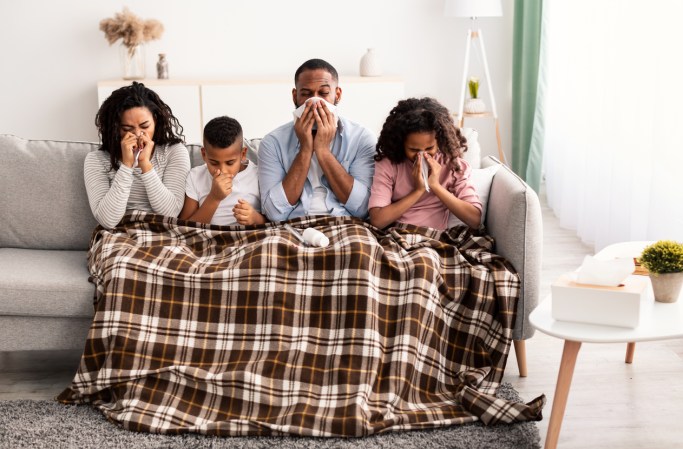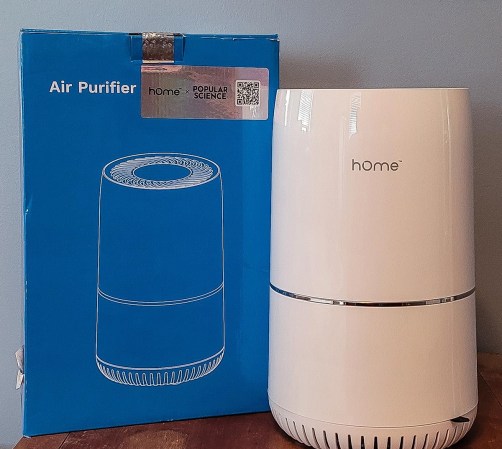We may earn revenue from the products available on this page and participate in affiliate programs. Learn More ›
About 81 million Americans suffer from seasonal allergies each year, according to the Asthma and Allergy Foundation of America (AAFA)—and as the impact of climate change becomes more pronounced, we’re seeing a longer and more severe allergy season. According to a recent report from Climate Central, allergy season is now starting earlier, lasting longer, and producing more pollen than in previous years. This is mainly due to warmer temperatures caused by climate change, causing plants to produce more pollen for longer periods. Allergy season has changed across the country, but allergy sufferers can manage the extended exposure.
RELATED: Allergy-Proof Your Home in 7 Steps
Longer Allergy Seasons Nation-Wide
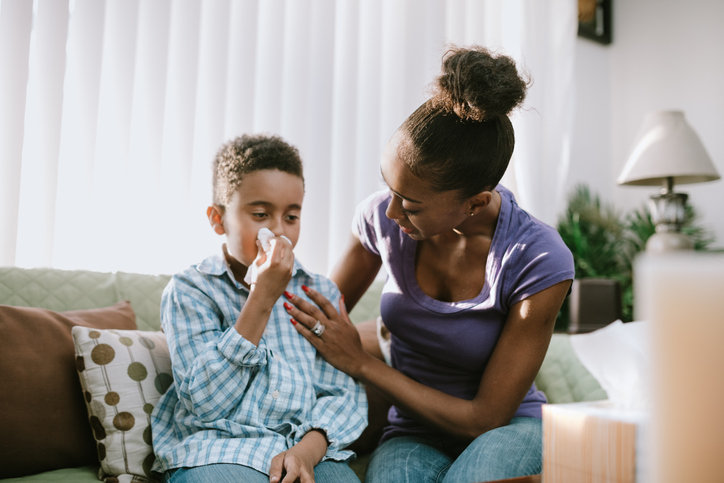
One way to measure the length of the allergy season is to look at the length of the growing season. The lengthening of the growing season due to climate change can lead to an increase in pollen production—a major allergen for many people. As plants have more time to grow and produce pollen, the pollen season can become longer and more severe, leading to a higher concentration of allergens in the air.
According to Climate Central, the growing season in Reno, Nevada, has increased by a staggering 99 days since 1970, marking one of the largest increases in the country. The study also found that the freeze-free season has lengthened by 27 days in the West, making it the region with the largest increase in the growing season. The Southeast, Northeast, and South have also seen significant increases of 16, 15, and 14 days, respectively. These changes in the growing season have a profound impact on the environment and agriculture, plus they contribute to longer allergy seasons, which can cause discomfort and health issues for people with allergies.
The current superbloom in California also contributes to the problem. While the superbloom may be beautiful, it produces a lot of pollen, and allergies in Southern California are generally worse for many people.
RELATED: 16 Must-Have Home Products for People with Allergies
Allergy Capitals Across the Country
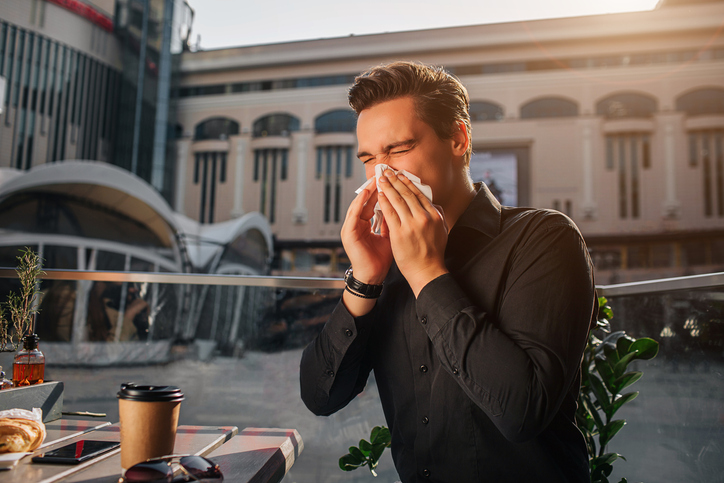
The AAFA conducts an annual report on the “Allergy Capitals” of the United States, ranking the 100 most challenging places to live with allergies. In the most recent report for 2023, the top three Allergy Capitals were Wichita, Kansas; Dallas, Texas; and Scranton, Pennsylvania. These cities have high pollen counts and high medication usage rates for allergies. The report also found that the Southeast region of the United States tends to have the highest rankings, with cities in Texas, Georgia, and Tennessee also ranking high on the list. This is likely due to factors such as warmer temperatures, higher humidity levels, and more plant species producing pollen.
RELATED: These 30 Places Have the Worst Weather in America
Tips for Managing Allergy Season
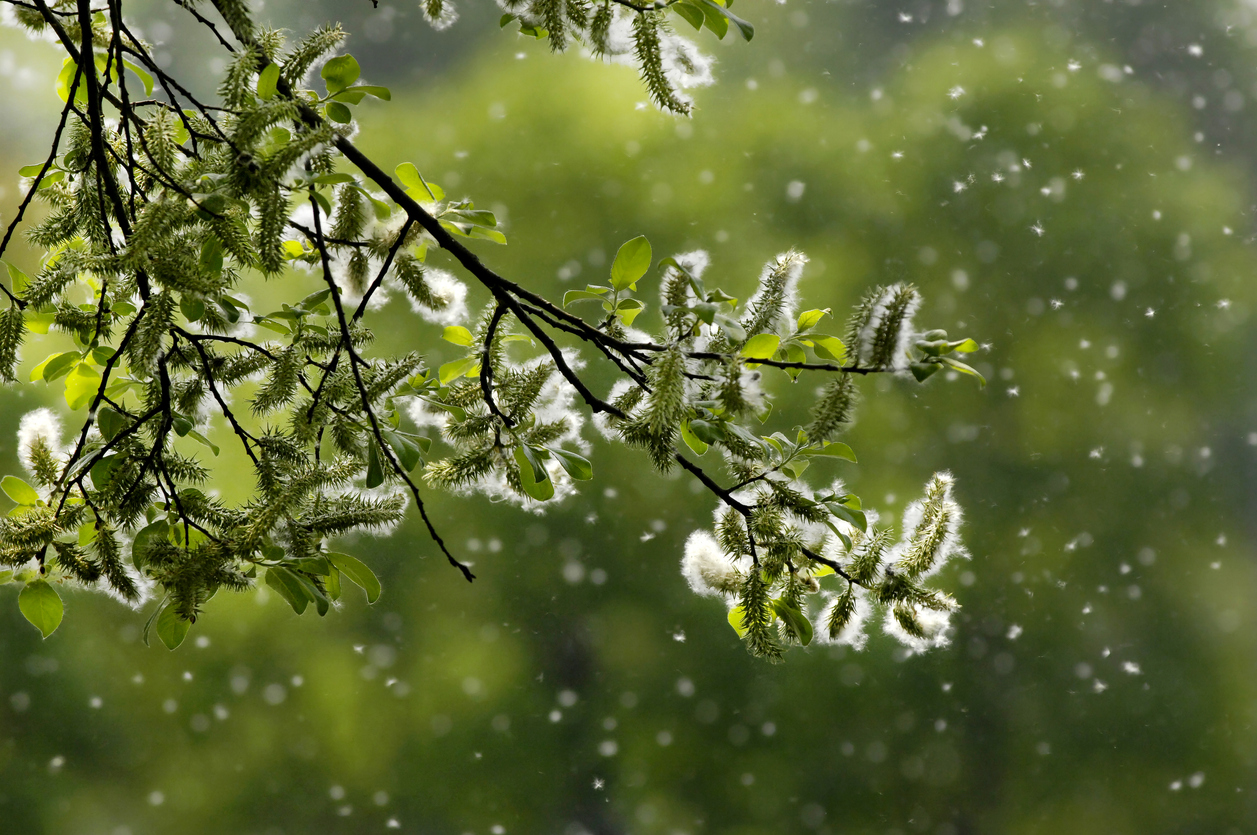
While there’s no cure for allergies, there are steps you can take to help manage your symptoms and stay comfortable during allergy season. Here are some strategies you can use to reduce your exposure to allergens and alleviate your symptoms.
Stay indoors during peak pollen hours
Pollen counts are typically highest in the morning, so try to stay indoors during these times if possible, even as outdoor tasks pick up beginning in April. If you need to go outside, consider wearing a mask or taking other measures to reduce your exposure to pollen.
Keeping your windows and doors closed can help prevent pollen from getting inside your home. To further reduce the amount of pollen in your home, it’s important to clean regularly. Dusting and vacuuming can help remove pollen and other allergens from surfaces and carpets. Using a vacuum with a HEPA filter, like the Shark APEX Powered Lift-Away Upright Vacuum at Amazon, can help trap allergens. It’s also important to change your HVAC filter each year.
RELATED: 7 Ways You’re Vacuuming Wrong
Be mindful of your pets

Pets can inadvertently bring pollen into your home when they go outside. To reduce the amount of pollen they bring in, try wiping them down with a damp cloth or pet-friendly wipes before they come inside. This can help remove any pollen that may be stuck to their fur and prevent it from spreading around your home. Additionally, consider keeping your pets off your bed and furniture during allergy season to further reduce your exposure to pollen.
RELATED: 8 Easy Tricks for Dirty Paws on Clean Floors
Use an air purifier
An air purifier with a HEPA filter, like the Winix 5300-2 Air Purifier at Amazon, can help remove allergens from the air in your home. Make sure to change the filter regularly to ensure it’s working effectively. If an air purifier is not in the budget right now, you can also use a HEPA filter on your HVAC system to help remove pollen and other allergens from the air.
RELATED: Solved! Do Air Purifiers Really Work?
Take allergy medication
Over-the-counter antihistamines can help relieve allergy symptoms such as sneezing, runny nose, and itchy eyes. If your symptoms are more severe, your doctor may be able to prescribe stronger medications such as nasal corticosteroids or allergy shots.
RELATED: The Best Dust Masks for Woodworking and Other DIY Projects
Wear a mask
One positive outcome of the Covid-19 pandemic is the normalization of daily mask wearing. Wearing a mask when you’re outside can help filter out pollen and other allergens. For best results, look for masks that have a high filtration efficiency, such as those labeled N95 or higher, and make sure the mask fits snugly over your nose and mouth.

